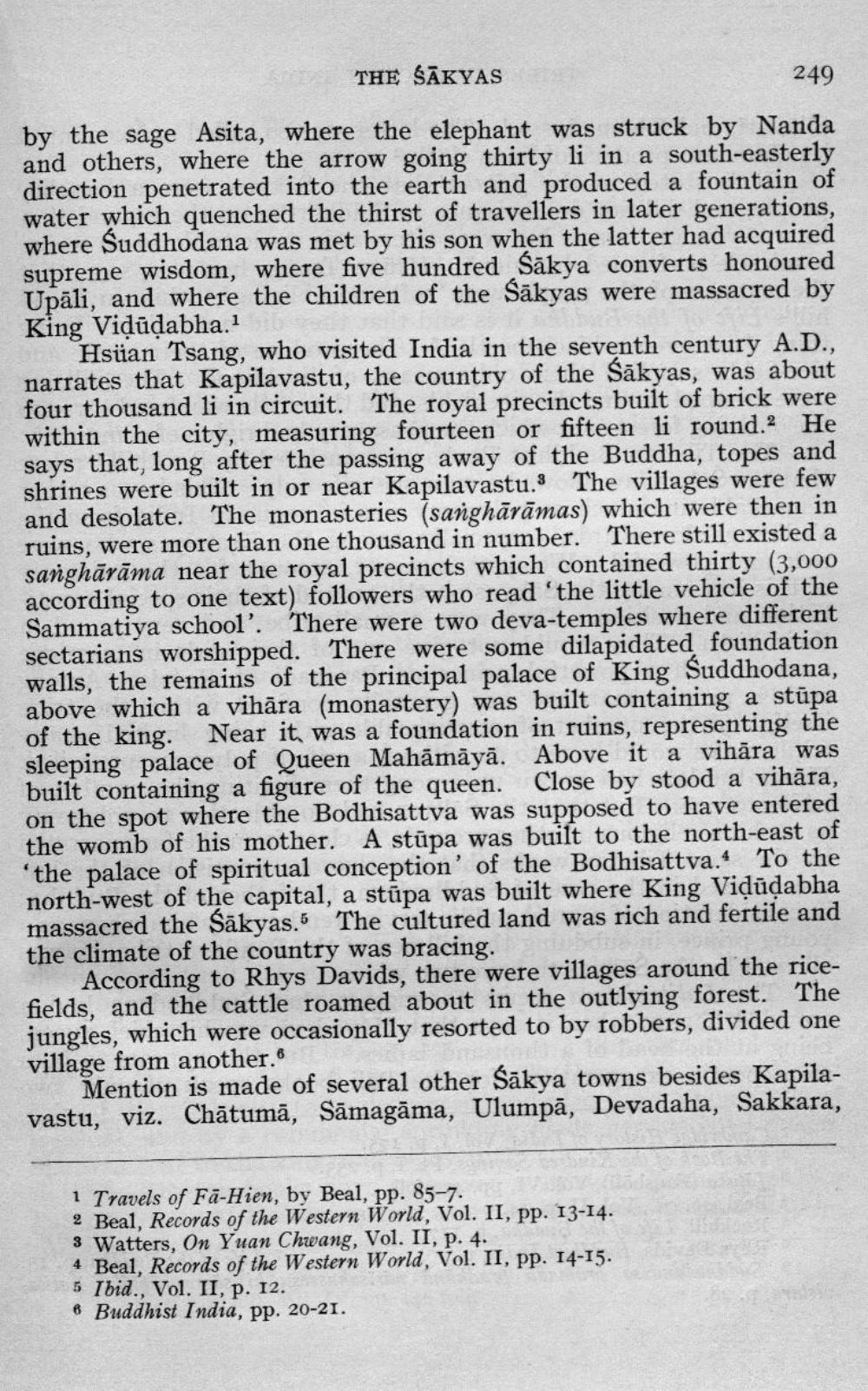________________
THE SĀKYAS
249 by the sage Asita, where the elephant was struck by Nanda and others, where the arrow going thirty li in a south-easterly direction penetrated into the earth and produced a fountain of water which quenched the thirst of travellers in later generations, where Suddhodana was met by his son when the latter had acquired supreme wisdom, where five hundred Sākya conyerts honoured Upāli, and where the children of the Sākyas were massacred by King Viļūdabha.1
Hsüan Tsang, who visited India in the seventh century A.D., narrates that Kapilavastu, the country of the Sākyas, was about four thousand li in circuit. The royal precincts built of brick were within the city, measuring fourteen or fifteen li round. He says that, long after the passing away of the Buddha, topes and shrines were built in or near Kapilavastu.3 The villages were few and desolate. The monasteries (sanghārāmas) which were then in ruins, were more than one thousand in number. There still existed a sanghārāma near the royal precincts which contained thirty (3,000 according to one text) followers who read 'the little vehicle of the Sammatiya school'. There were two deva-temples where different sectarians worshipped. There were some dilapidated foundation walls, the remains of the principal palace of King Suddhodana, above which a vihāra (monastery) was built containing a stūpa of the king. Near it was a foundation in ruins, representing the sleeping palace of Queen Mahāmāyā. Above it a vihāra was built containing a figure of the queen. Close by stood a vihāra, on the spot where the Bodhisattva was supposed to have entered the womb of his mother. A stūpa was built to the north-east of 'the palace of spiritual conception of the Bodhisattva. To the north-west of the capital, a stūpa was built where King Viļūdabha massacred the sākyas. The cultured land was rich and fertile and the climate of the country was bracing.
According to Rhys Davids, there were villages around the ricefields, and the cattle roamed about in the outlying forest. The jungles, which were occasionally resorted to by robbers, divided one village from another.
Mention is made of several other Śākya towns besides Kapilavastu, viz. Chātumā, Sāmagāma, Ulumpā, Devadaha, Sakkara,
1 Travels of Fä-Hien, by Beal, pp. 85-7. 2 Beal, Records of the Western World, Vol. II, pp. 13-14. 3 Watters, On Yuan Chwang, Vol. II, p. 4. 4 Beal, Records of the Western World, Vol. II, pp. 14-15. 5 Ibid., Vol. II, p. 12. 6 Buddhist India, pp. 20-21.




